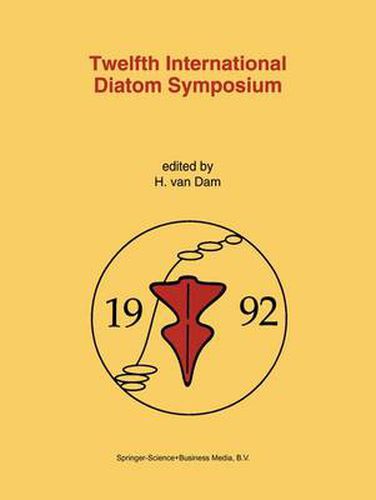Readings Newsletter
Become a Readings Member to make your shopping experience even easier.
Sign in or sign up for free!
You’re not far away from qualifying for FREE standard shipping within Australia
You’ve qualified for FREE standard shipping within Australia
The cart is loading…






The Twelfth International Diatom Symposium stressed how diatoms can be used to assess the human impact on natural waters, without neglecting other important fields of research. As the frustules of many diatom species are relatively resistant to dissolution they are preserved in freshwater and marine sediments and provide a record of past environments on earth. In past decades they have been successfully used to reconstruct changes in water bodies evoked by changes in salinity, acidification and eutrophication. In the last few years diatom-inferred predictions of environmental variables have become much more quantitative. In recent research reports, the strong separation between palaeolimnological and neolimnological diatom research is fading, as palaeolimnologists are increasingly using modern calibration sets to infer past states of the environment. This quantitative approach is also very suitable for prediction of future changes in the biota of surface waters. Also ecological changes due to climatic modification have been investigated more thoroughly recently. An important research topic is the occurrence of toxic diatoms, particularly along the coasts of North America. These proceedings are intended to provide a balanced view of such modern developments in diatom research. They should also be of interest to non-specialists in diatoms, who can use the results of diatom research as a tool in a more general taxonomic, ecological and geological context.
$9.00 standard shipping within Australia
FREE standard shipping within Australia for orders over $100.00
Express & International shipping calculated at checkout
The Twelfth International Diatom Symposium stressed how diatoms can be used to assess the human impact on natural waters, without neglecting other important fields of research. As the frustules of many diatom species are relatively resistant to dissolution they are preserved in freshwater and marine sediments and provide a record of past environments on earth. In past decades they have been successfully used to reconstruct changes in water bodies evoked by changes in salinity, acidification and eutrophication. In the last few years diatom-inferred predictions of environmental variables have become much more quantitative. In recent research reports, the strong separation between palaeolimnological and neolimnological diatom research is fading, as palaeolimnologists are increasingly using modern calibration sets to infer past states of the environment. This quantitative approach is also very suitable for prediction of future changes in the biota of surface waters. Also ecological changes due to climatic modification have been investigated more thoroughly recently. An important research topic is the occurrence of toxic diatoms, particularly along the coasts of North America. These proceedings are intended to provide a balanced view of such modern developments in diatom research. They should also be of interest to non-specialists in diatoms, who can use the results of diatom research as a tool in a more general taxonomic, ecological and geological context.